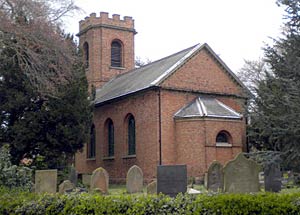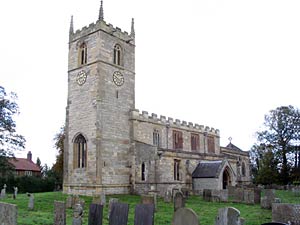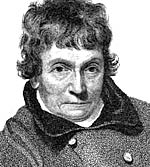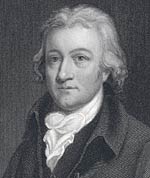< Previous | Contents | Next >

Morton church in 2014.
© Copyright Richard Vince and licensed for reuse under this Creative Commons Licence
MORTON. Quiet little Morton has an ivied brick church of 1756 where the Fiskerton folk come to service, and at the end of a lane, where a stream skirts the village, we have a charming glimpse of the dovecot belonging to the manor house, in a setting of lawns and brilliant flower borders.
The Wonderful Cartwrights
MARNHAM. It is quiet and pleasant, with High Marnham's few houses and many trees up a pretty lane near the Trent, and Low Marnham with a lovely church of 700 years.
Quaint gargoyles keep watch outside, where much that we see, including the tower, is 15th century. A 13th century doorway has deep mouldings all round, and a hood adorned with heads of a bishop and a queen with charming ringlets. The open doorway frames a delightful view of the interior, filled with light, its modern roofs looking down on 13th century arcades in nave and chancel. Very beautiful is the south arcade of the nave, with detached shafts and carved capitals. A similar pillar is in the chancel, which is entered by a 13th century arch.

Low Marnham church in 2005.
The south aisle has a medieval piscina and a holy water stoup by the door. There is a Jacobean altar table and a 17th century chest. The old stone face of a man with a frightened expression peeps from a corner of the nave.
Wilfrid, the patron saint, is in old glass in the north aisle; and it is odd to note that he has two right hands, owing to the remains of the original figure having been made up with fragments. There is also an ancient roundel.
Above her floorstone in the nave is a testimonial to Mary Outram, who "resigned her breath" in 1778 in the family of William and Anna Cartwright, where she was housekeeper for 45 years. She was a wonderful servant to a wonderful family. Their old home was pulled down at the end of the 18th century, but their memorials are in the church. One is a floorstone in the chancel to William Cartwright of 1781, who had something to do with the raising of the road from Newark to Muskham above flood level, but is best remembered as the father of a group of remarkable sons.
We owe a debt to the whole generation of Cartwrights—John, Edmund, Charles, George, and their father too; a kindly soul was he who felt he was doing a work of national importance when he began a movement to abolish tips to servants, a system that had become such an evil, he said, that only the rich could afford to go visiting.

Major John Cartwright (1740-1828)
John was the father of parliamentary reform, the self-sacrificing begetter of many of the liberties of our common life, a man who gave up his chance of promotion in the Navy because he would not fight against our American colonists. He could fight and he could talk; he could write and he could farm; he had the gifts of the architect; he could plan national defences and, fortunately, when his pleas for human rights for British citizens led him to the dock and a £100 fine, he could pay. They put up a statue of him in Cartwright Gardens, London, where he died and which they named after him.
Brother Charles, who also served in the Navy, had the rare family spirit, and when £1000 was allotted to him as prize money for a successful sea fight he made it over to his sailors.
Brother George, an army officer of far-ranging activities, published a massive work on his 16 years of life in Labrador, a volume which gave the world perhaps its first detailed description of Eskimo life and habits.

Edmund Cartwright (1743-1823).
We have still to meet brother Edmund, the prince of them all, who was born in this village and so won for it a high renown. Need it be explained that he was the inventor of the power-loom, and the man who, in his quiet old parsonage, afforded England the means of becoming the richest and most powerful nation in the world? To forget that is an injustice to one of the most delightful characters who ever adorned our green and pleasant land, and one of the most remarkable intellects of all time. We come upon him at Battle in Sussex where he lies near the old Abbey; and there we tell his story. In this splendid generation of Cartwright boys a fine old Nottinghamshire family burst into flower from stock which had been for generations slowly coming to intellectual maturity.
